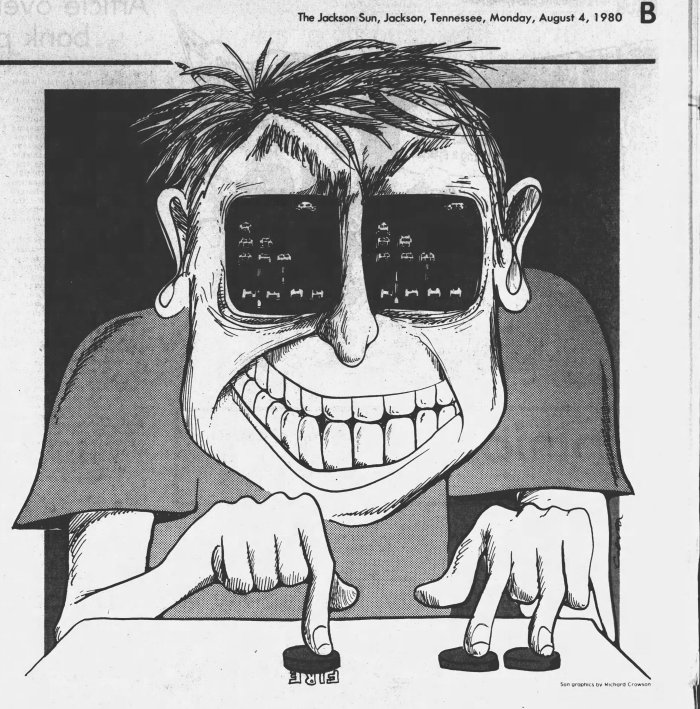
Video game haters. If you think we have them now, then you’re probably not old enough to remember the gauntlet of disgust we gamers of The 80s had to navigate just to play a simple game of Pac-Man in an arcade.
With video games being mainstream today, and with video gaming being everywhere and accessible 24/7, it’s difficult to imagine a time ever existed that loathed video games and advanced technology as much as the early 80s did but, believe me, the struggle was real. I suppose the same kinds of people who cursed television, rock n’ roll and Elvis in The 50s were the same mindsets, if not the same generation, who tried to ban arcades and video games in The 80s. If not, they at least had the same level of ignorance in common.

Despite having lived through The 80s, and also having been old enough to have enjoyed the video craze and everything it had to offer at the height of its fervor, I’m still struck by the absolute disdain some people had back then, not only for video games, but the gamers themselves.
Maybe the adults were jealous of the fact that we were going to become the first generation to not have our lives interrupted by being drafted into a war; the first to become independent from our parents at the youngest of ages, and the very first to rush headlong into the computer age, arms wide-open, and never look back. I don’t know. But something was off. There was a disconnect between adults and kids of The 70s and early 80s, but none of us ever knew what it had originally plugged into. Having been raised to be independent by working parents who weaned us off depending on them for every little thing before the age of 12, adults were as much a mystery to us as we were to them.
 For a while I wasn’t aware of this major dislike for video games and the arcade, this new electronic clubhouse awash with light and comforting whirring sounds, only the barely perceptible heat in the gaze of strangers much older than me, watching and sighing in frustration as I traded in dollars for quarters in a 7-11. Too young to know what resentment actually looked like, I at least knew how to identify disappointment. Every single adult I saw in or around arcades, excluding the operators, had that look in their eyes. Disappointment. And it wasn’t just a generation gap I was feeling the affects of. It was a vast ocean separating two continents of understanding.
For a while I wasn’t aware of this major dislike for video games and the arcade, this new electronic clubhouse awash with light and comforting whirring sounds, only the barely perceptible heat in the gaze of strangers much older than me, watching and sighing in frustration as I traded in dollars for quarters in a 7-11. Too young to know what resentment actually looked like, I at least knew how to identify disappointment. Every single adult I saw in or around arcades, excluding the operators, had that look in their eyes. Disappointment. And it wasn’t just a generation gap I was feeling the affects of. It was a vast ocean separating two continents of understanding.
Because of this, you tended to hide your interest for the arcade from adults, especially people the age of your parents or grandparents, or people you knew were “churchy” lest you be judged and punished. Newspapers of the day, the place most adults received their news from, teemed with anti-video game propaganda beginning in early 1981. Even The Surgeon General of The United States, C. Everett Koop (R), an ultra-Conservative who held superstar status during the Reagan era thus considerable sway over public opinion, called video games “dangerous” in the Fall of 1982. This caused a massive wave of anti-video game articles to appear in morning newspapers, flooding readers with daily doses of fear of the “electronic monsters” devouring their child’s morality. In fact, the sheer amount of anti-video game articles following Koop’s statements is astonishing.
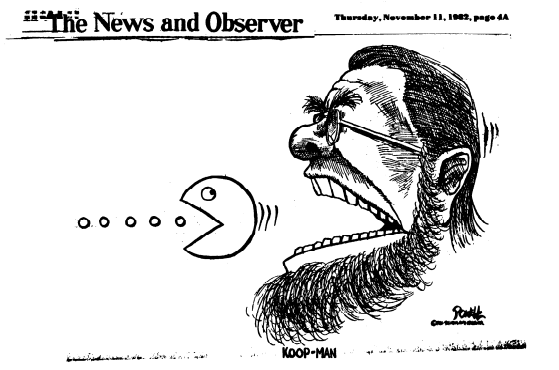
So although you may have been an ace on Asteroids, you even more quickly became a pro at lying about certain things, and especially how much time and/or money you spent in the arcade. And heavy metal was also out. If you listened to Judas Priest and played arcade games, you were pretty much considered to be one of Satan’s spawn.
But for what it’s worth, despite the then negative perceptions of a new technology, 80s anti-video game graphics on video game related articles left an interesting impression of an era when parents were paranoid, even terrified, of not what they knew but only what they thought video games were doing to their children. These neurotic and often mean-spirited images give indication of just how widespread the fear was, and also why conservative coalitions were formed to ban or restrict the use of video games in arcades beginning in 1981. It was that fear, and that fear alone, that made it so easy for city councils across the nation to kill the thrill of the arcade in certain States as quickly as they opened. All it took was one meeting with City Hall or the Mayor. Usually both did the trick. Methods used were simple enough:
*suddenly changing then imposing zoning ordinances that the arcade couldn’t adapt to
*increasing taxation and operating license fees
*filing false police reports or scheduling walk-throughs so the public saw an increased police presence which made the arcade appear “unsafe” or a “neighborhood nuisance”
* restricted hours of operation so the operator’s profit window shrank dramatically
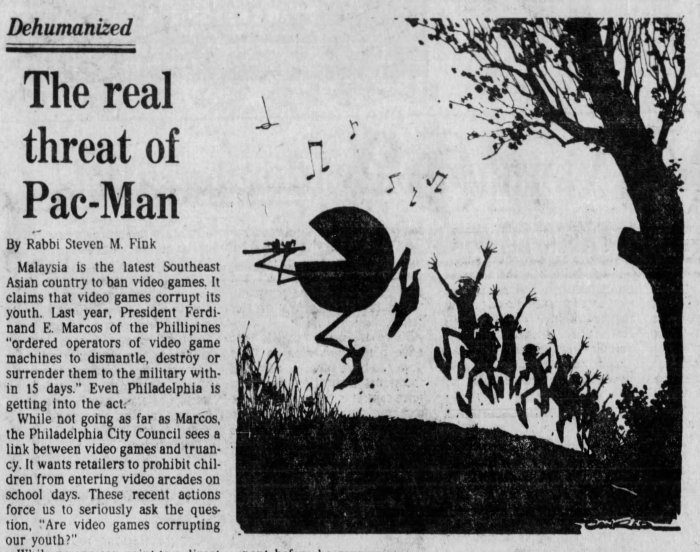
Now I’ve no idea just how many arcades were closed down in 1981, 1982 or even 1983. But I know just from the sheer number of articles on the subject I see in newspaper archives that thousands of arcades were affected by negative press. In the Spring of 1983, on a Saturday I’ll always remember because the sadness left a life-long impression on me, a handful of friends and I went for pizza and Pac-Man at our favorite place on 82nd and Stark in Portland, Oregon. We’d been there only the week before, sitting at our favorite Pac-Man cocktail, eating pizza and sipping cokes in those frosty red-lacquer plastic cups you don’t see anymore. My best friend, Jeanie, had beat her highest score. We’d all cheered and vowed to catch up to her. But this time we found the arcade closed and empty, the sign for next week’s Stargate tournament still up on the door despite obvious canceled plans. The entire place was gone. And it had happened quickly.
In less than a year every arcade on 82nd in Portland, all 6, were shuttered. All of them. Some by the owners, tired of losing money on a dwindling fad. But most were shut down due to noncompliance with ordinances, usually minors being present during school hours. This pattern would roll out across America like a virus. In many States the era of video game arcades would end faster than it began. Others, for some miraculous reason, would last into The 90s and even longer. Geography and area business politics played a large part in that.

It was often said, or at least suggested in the symbolism of many anti-video game graphics, that people who played arcade games were not in control of their lives, nor themselves. Suspected of being “brainwashed”, “reprogrammed” and “weak willed”, video game-playing idiots, or “vidiots”, who wasted their lives playing “monster machines” were seen as having everything in common physically and morally with a heroin addict or a chronic gambler. They were, according to some people, lost souls. Derelicts. Scum on the surface of the golden pond alongside America’s idyllic fields of dreams. They were wrong. Obviously. Look at what remarkable things have happened with video games on our long, long journey from PONG to VR.
When I was 13, the idea of being able to play a game with someone in Tokyo, at the same time, on the same platform, and communicate live with that person, was an impossibility. So impossible, in fact, that we didn’t even imagine it, nor would we have been able to even if the concept was explained to us. We lived in a dial-telephone world, with a no-camera view. Now we play games with people on a universal platform via console or comp set-up of our choice. Reaching another player and connecting to them is merely two-seconds away. We are no longer gamers confined to a “loser” peer group, in a small arcade, in a small town, forever locked into single or two-player non-integrated gameplay. We can now alter each other’s reality in games with our characters, change and react to each other’s in-game environment, damage and heal each other’s game characters. We can make friends, enemies and sometimes fall in love. The entire world is our playground now. We aren’t a fad subculture any more, clicking quarters into a coin slot, looking for a safe place to land our battered craft. We’ve arrived.
We’re here.

Until next time, may all your quarters be red ones ♥
Video Game Article Graphics From National Newspaper in America During “The Video Game Crisis” 1982-1984
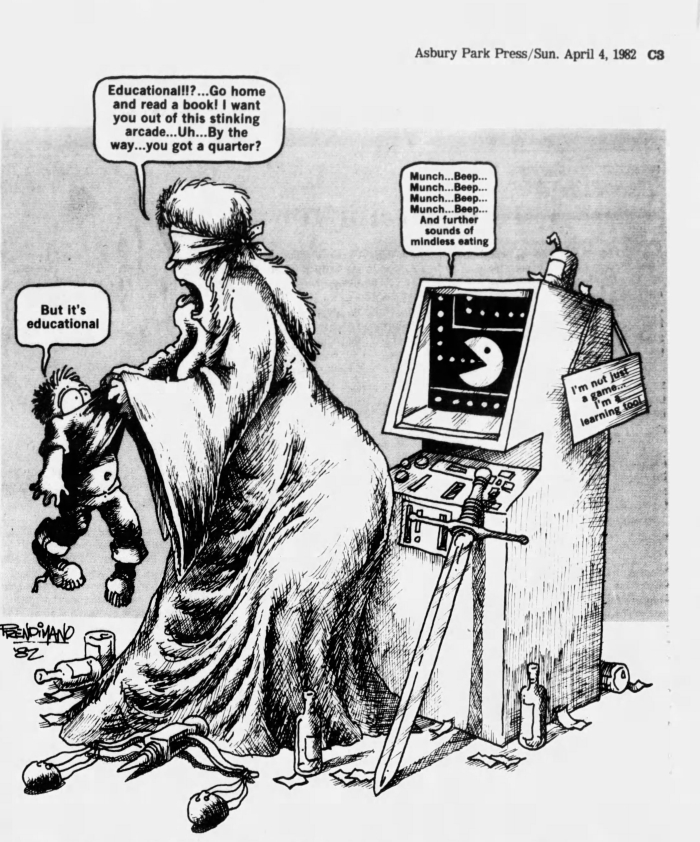
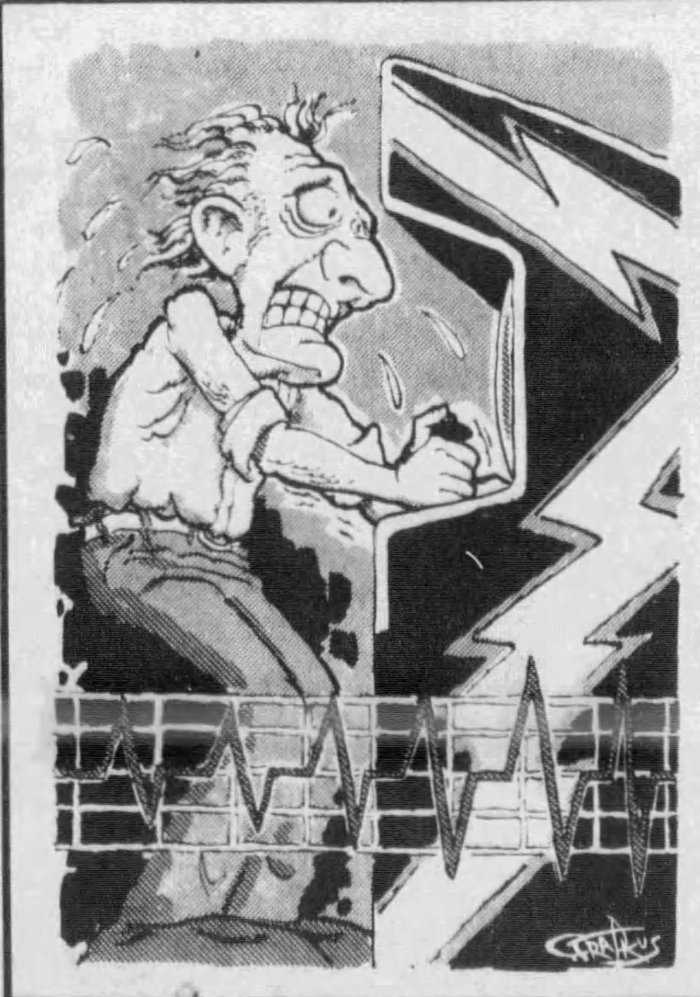
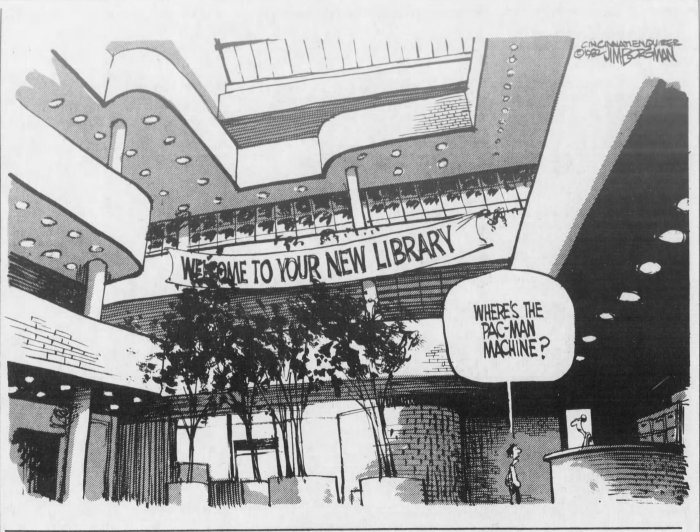
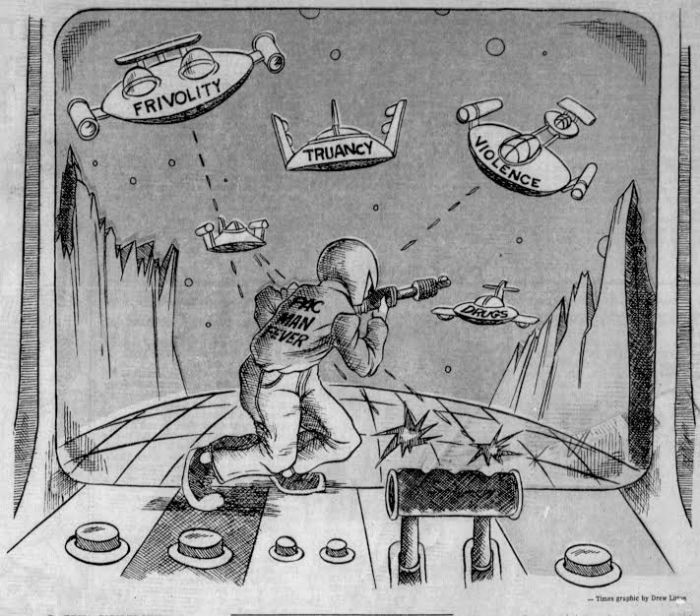
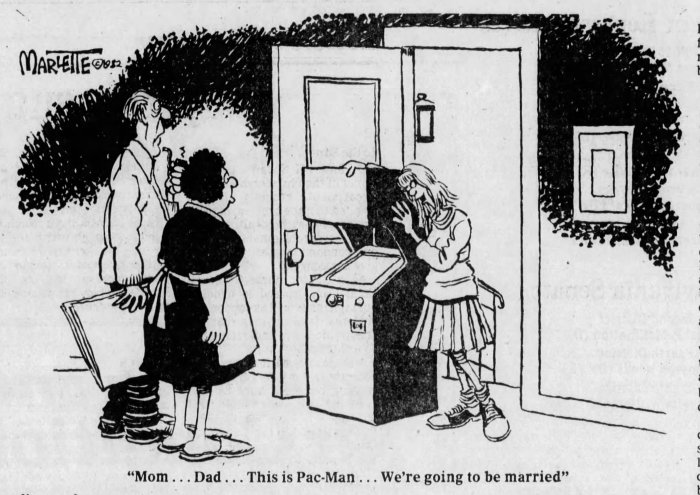
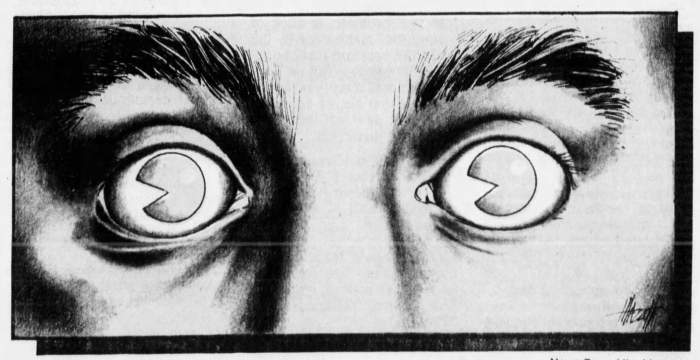
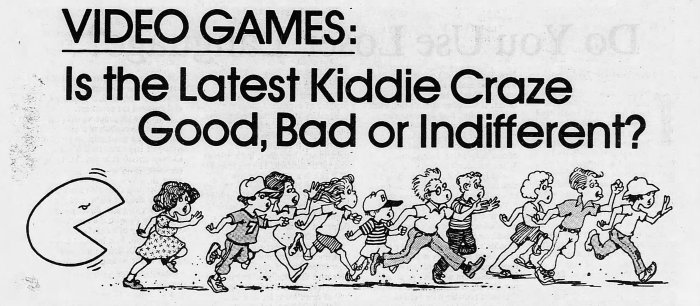
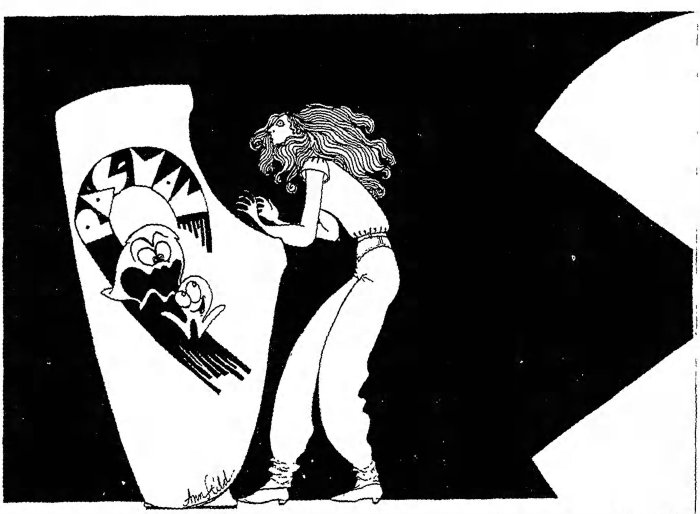
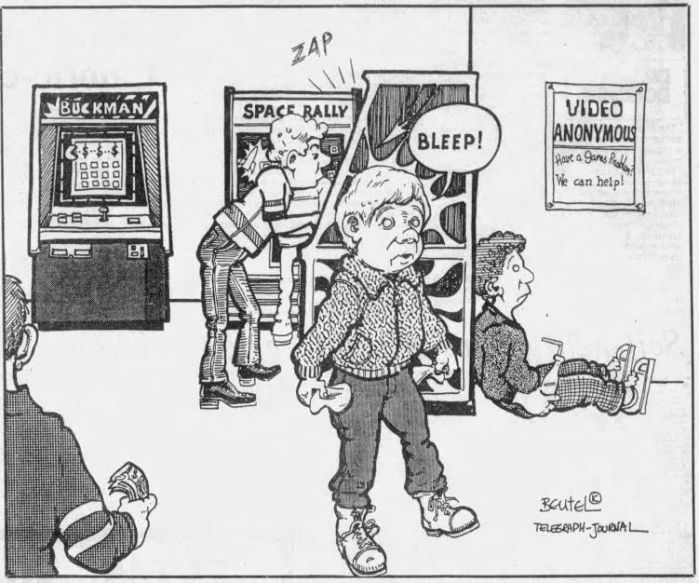
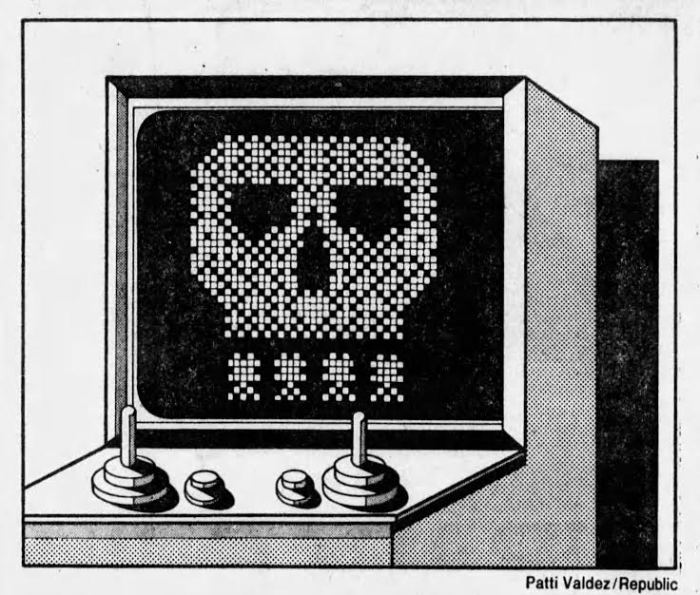
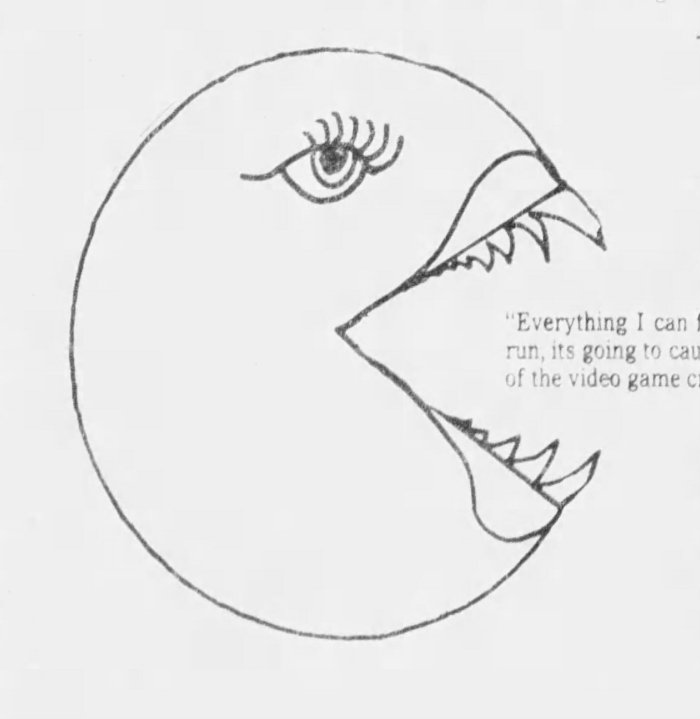
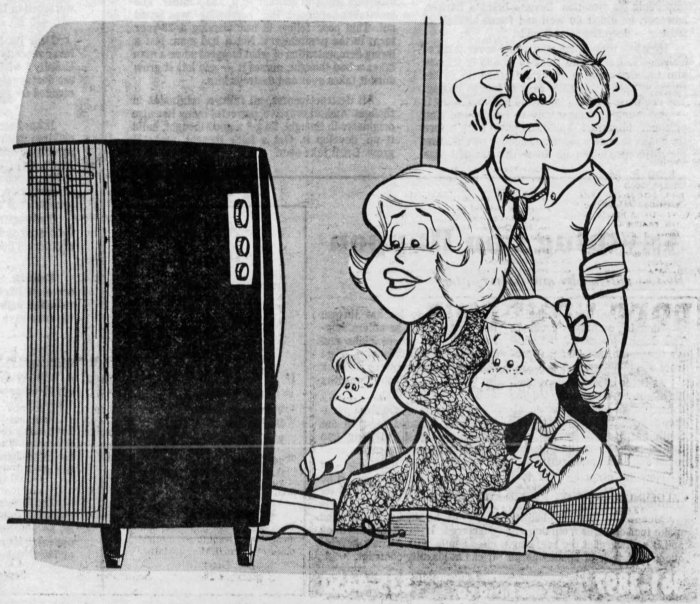
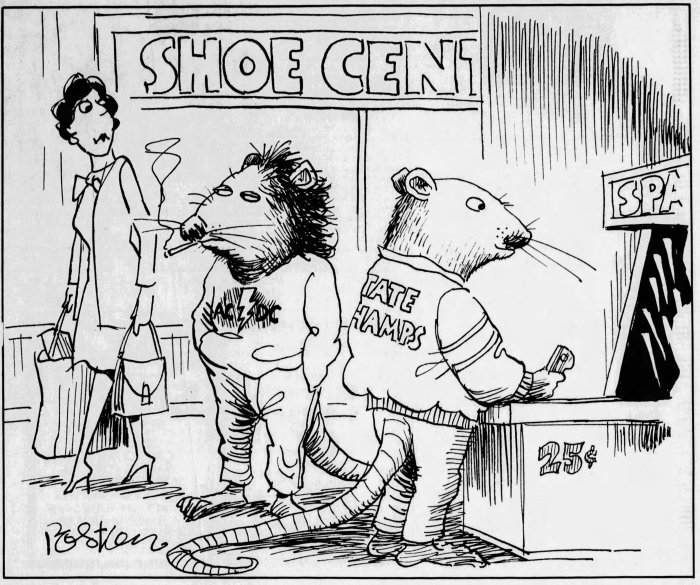
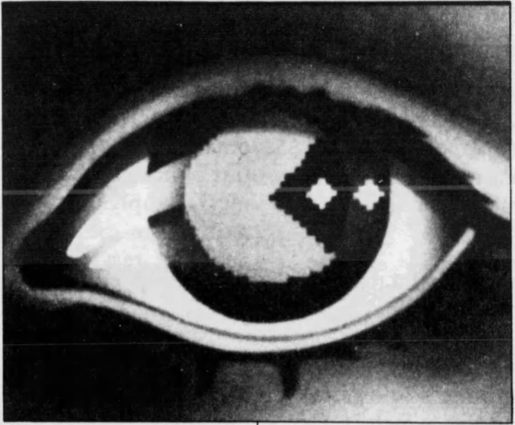
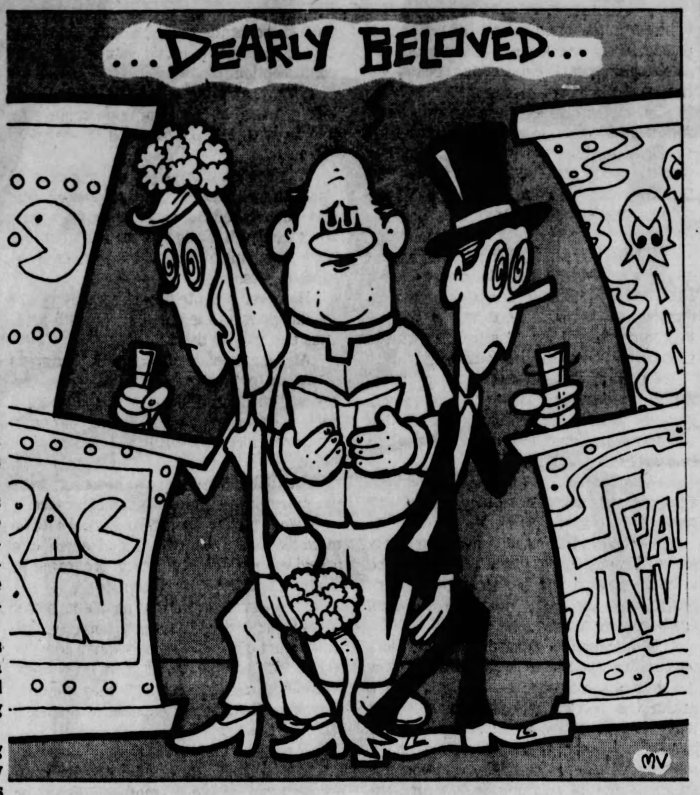
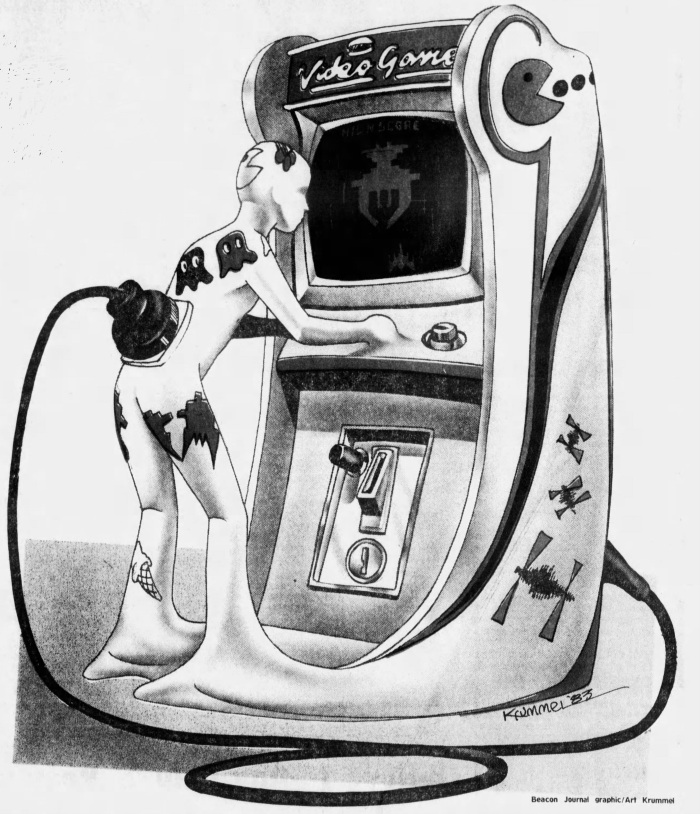
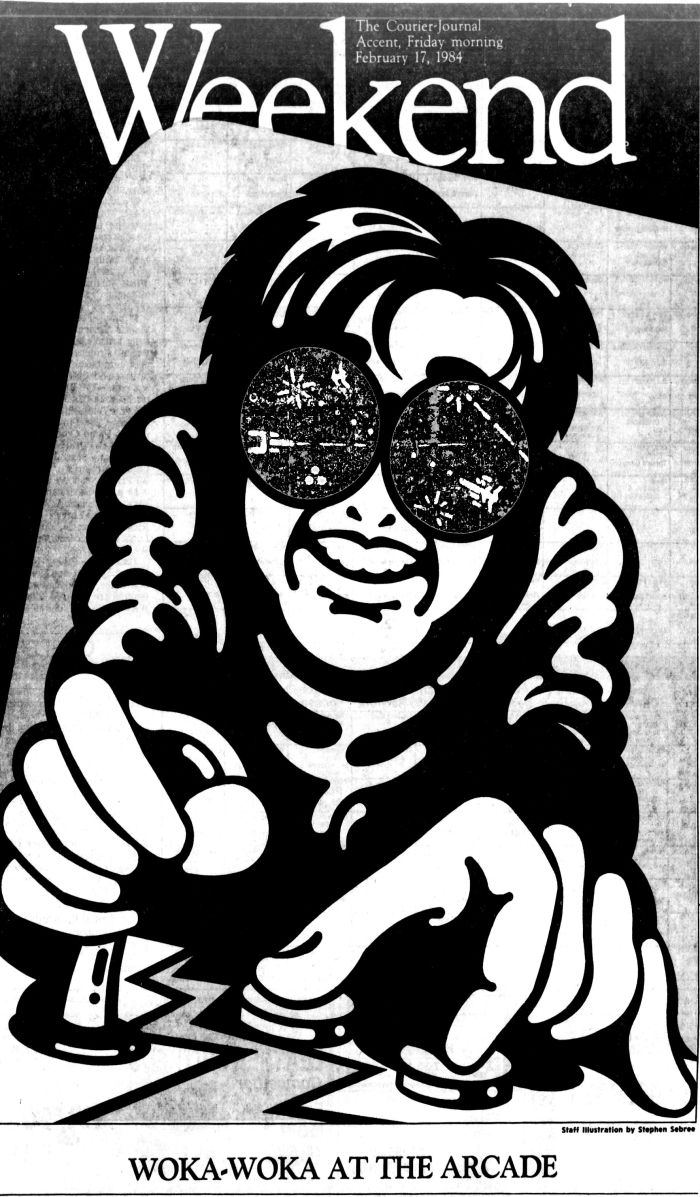
I’m 42 and playing Skyrim Special Edition on my spare time when I’m not doing tech support, but I used to own an Atari 2600 and couple dozen carts — including the watered-down version of Pacman — when I was 5 or 6. Spent more time messing with Lego sets than the 2600. Reading your article — what a trip back to the 80s — left me thinking between this era and now, like where in my country there’s never a shortage of nasty toxic players online.
LikeLike